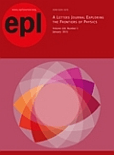
EPL
Scope & Guideline
Innovative Insights, Transformative Discoveries
Introduction
Aims and Scopes
- Condensed Matter Physics:
EPL publishes research on the fundamental properties of condensed matter, including studies on electronic, magnetic, and optical properties of materials, phase transitions, and phenomena in low-dimensional systems. - Statistical Physics and Thermodynamics:
The journal features papers that explore statistical mechanics, thermodynamic principles, and critical phenomena, including studies on entropy, phase transitions, and fluctuations in various systems. - Quantum Mechanics and Quantum Information:
Research on quantum phenomena, including quantum entanglement, quantum computing, and quantum thermodynamics, is a significant focus area, reflecting the growing interest in quantum technologies. - Complex Systems and Networks:
EPL addresses the dynamics and properties of complex systems, including social networks, biological systems, and ecological interactions, emphasizing the interdisciplinary nature of modern physics. - Plasma Physics and Astrophysics:
The journal includes studies on plasma physics, astrophysical phenomena, and cosmology, highlighting the interplay between fundamental physics and astronomical observations. - Nanotechnology and Materials Science:
Papers on the synthesis, characterization, and application of nanomaterials are prominent, reflecting the journal's commitment to advancing technology at the nanoscale. - Interdisciplinary Approaches:
EPL encourages submissions that bridge physics with other scientific disciplines, including biology, chemistry, and engineering, promoting a holistic understanding of complex phenomena.
Trending and Emerging
- Machine Learning and Data Science Applications:
There is a significant increase in publications applying machine learning techniques to solve complex problems in physics, from predictive modeling to data analysis, showcasing the integration of AI in physical research. - Quantum Technologies and Quantum Information Science:
The journal has seen a surge in contributions related to quantum information science, including quantum computing, quantum cryptography, and quantum optics, highlighting the growing importance of these fields. - Topological Materials and Phases:
Research on topological materials, including topological insulators and semimetals, is increasingly prominent, reflecting the ongoing interest in their unique electronic properties and potential applications. - Active Matter and Non-Equilibrium Systems:
The study of active matter, which includes systems of self-propelled particles and their collective behaviors, is emerging as a hot topic, emphasizing the relevance of non-equilibrium statistical mechanics. - Plasmonics and Metamaterials:
Research focused on plasmonic materials and metamaterials, particularly their applications in sensing and imaging technologies, is on the rise, revealing a trend towards innovative material applications. - Complex Networks and Dynamics:
The exploration of complex networks, including social and biological systems, is gaining attention, illustrating the interdisciplinary nature of contemporary physics research.
Declining or Waning
- Traditional Solid-State Physics:
Research focusing exclusively on traditional solid-state physics, such as basic crystallography and bulk material properties, has seen a decline as the field shifts towards more complex and interdisciplinary studies involving nanostructures and emergent phenomena. - Classical Statistical Mechanics:
The interest in classical statistical mechanics topics, particularly those that do not integrate modern computational or theoretical advances, has diminished as researchers increasingly favor approaches that involve complex systems and new statistical methods. - Linear Optical Phenomena:
Studies centered on linear optical phenomena without applications to advanced technologies or novel materials have become less prevalent, as the community moves towards nonlinear optics and photonic applications. - Equilibrium Thermodynamics:
Research focused solely on equilibrium thermodynamics is waning, with a growing emphasis on non-equilibrium systems and their dynamics, reflecting the complexity of real-world applications.
Similar Journals
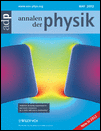
ANNALEN DER PHYSIK
Illuminating Innovative Research Since 1799ANNALEN DER PHYSIK, a prestigious journal published by WILEY-V C H VERLAG GMBH, stands as a cornerstone of the field of physics and astronomy since its inception in 1799. With an ISSN of 0003-3804 and an E-ISSN of 1521-3889, this journal provides a platform for innovative research and critical discourse across various domains of physics. Annalen der Physik is currently ranked in the Q2 category for general physics and astronomy, occupying rank #76 out of 243 in Scopus, placing it within the 68th percentile. This indicates its significant impact and the quality of research it publishes. Although the journal does not offer Open Access options, its robust historical lineage and ongoing contributions ensure that it continues to be an essential resource for researchers, professionals, and students alike. For those seeking to stay at the forefront of contemporary physics research, ANNALEN DER PHYSIK represents a vital source of knowledge, innovation, and scholarly communication.
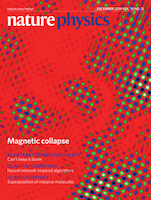
Nature Physics
Connecting Ideas, Inspiring Innovation in PhysicsNature Physics is a premier journal dedicated to publishing high-impact research in the realm of physics, brought to you by the esteemed NATURE PORTFOLIO. With its ISSN 1745-2473 and E-ISSN 1745-2481, this journal has established itself as a vital resource for the physics community, enjoying a remarkable Q1 quartile ranking in the Physics and Astronomy category for 2023 and securing an impressive Rank #5/243 and a 98th percentile ranking in Scopus. Since its inception in 2005, Nature Physics has become a catalyst for innovation, featuring cutting-edge research that encompasses a broad spectrum of physics disciplines. Although it operates under traditional subscription models, it maintains a commitment to accessibility through selective publications and editorial excellence. Positioned in Berlin, Germany, this journal is a must-read for researchers, professionals, and students who seek to stay at the forefront of advancements in physics.

Frontiers of Physics
Fostering Collaboration for a Brighter Physics FutureFrontiers of Physics, published by Higher Education Press, is a premier open-access journal dedicated to fostering innovative research and excellence within the field of physics. With an ISSN of 2095-0462 and an E-ISSN of 2095-0470, this rapidly growing journal has established itself as a valuable platform for disseminating cutting-edge findings, covering a diverse range of topics from theoretical frameworks to experimental advancements. Notably, Frontiers of Physics has achieved an impressive Q1 ranking in the 2023 Scopus Quartiles for Physics and Astronomy, securing a competitive 5th out of 81 positions in its category, reflecting a high impact factor that underscores its importance to the scientific community. Since its inception in 2011 and continuing through 2024, the journal aims to bridge the gap between academia and industry, encouraging collaboration among researchers, professionals, and students alike. Its commitment to open access ensures that high-quality research is readily accessible, thereby promoting knowledge sharing and advancement in the global physics community. Explore the potential of your research in Frontiers of Physics, where the future of physics flourishes.
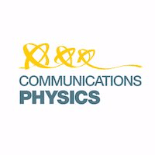
Communications Physics
Bridging gaps with groundbreaking findings.Communications Physics is a premier open access journal published by Nature Portfolio, dedicated to disseminating high-quality research in the field of Physics and Astronomy. Since its inception in 2018, the journal has rapidly established itself as a vital platform for innovative scientific communication, boasting an impressive Impact Factor and achieving Q1 status in the 2023 category of Physics and Astronomy (miscellaneous). With a Scopus rank of #31 out of 243, placing it within the 87th percentile, Communications Physics attracts a global audience of researchers, professionals, and students eager to engage with cutting-edge findings. The journal supports open access, ensuring that research is freely available to the public, which enhances its visibility and encourages broader discussions within the scientific community. Located in Berlin, Germany, Communications Physics aims to bridge the gap between various disciplines within physics, fostering interdisciplinary collaboration and inspiring future research endeavors.
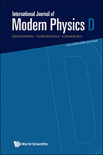
INTERNATIONAL JOURNAL OF MODERN PHYSICS D
Connecting Ideas in Space and Planetary ScienceWelcome to the INTERNATIONAL JOURNAL OF MODERN PHYSICS D, a premier publication dedicated to the advancement of knowledge in the fields of Astronomy and Astrophysics, Mathematical Physics, and Space and Planetary Science. Published by WORLD SCIENTIFIC PUBL CO PTE LTD in Singapore, the journal boasts an impressive impact, being ranked Q2 in Astronomy and Astrophysics and Mathematical Physics, and Q3 in Space and Planetary Science. With a converged publishing timeline from 1996 to 2024, this journal provides a vital platform for researchers and professionals to disseminate their findings, engage with cutting-edge research, and explore emerging ideas in modern physics. Although it operates under a traditional access model, the rigorous peer-reviewed process ensures that only the highest quality research contributes to the collective understanding of our universe. Join us in advancing the frontiers of physics and astronomy!

Physics
Fostering Collaboration Through Open Access PhysicsPhysics, published by MDPI, is an open-access journal that commenced in 2019 and has quickly established itself as a significant contributor to the field of physics and astronomy. With a respectable impact factor and categorized in the Q2 quartile for 2023, this journal serves a broad spectrum of topics within the discipline, fostering innovative research and insights. As part of the MDPI portfolio, known for promoting high-quality, peer-reviewed research, Physics aims to provide a platform for scholars, professionals, and students to publish their findings and engage with contemporary debates in the field. The journal's accessibility, paired with its commitment to scientific excellence, ensures that research is readily available to a global audience, which is crucial for advancing knowledge and collaboration in physics. Located in the heart of Switzerland at ST ALBAN-ANLAGE 66, CH-4052 BASEL, the journal enjoys a position at the nexus of cutting-edge research and academia.
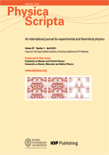
PHYSICA SCRIPTA
Innovating Insights in Atomic and Molecular PhysicsPHYSICA SCRIPTA, established in 1970 and published by IOP Publishing Ltd, is a prestigious journal dedicated to the broad fields of physics, encompassing topics such as atomic and molecular physics, condensed matter physics, and mathematical physics. With an impressive commitment to advancing scientific knowledge, it holds a significant standing in the academic community, evidenced by its Q2 and Q3 rankings across various categories in 2023. The journal is instrumental for researchers, professionals, and students seeking to disseminate and engage with high-quality research, fostering collaboration and innovation within the field. Although it currently does not offer open access options, its robust editorial standards ensure the dissemination of impactful studies, contributing to its rising citation metrics. Published from the United Kingdom, PHYSICA SCRIPTA continues to be a vital resource for contemporary developments in physics, paving the way for future discoveries.

JOURNAL OF THE KOREAN PHYSICAL SOCIETY
Empowering Researchers with Cutting-Edge FindingsJOURNAL OF THE KOREAN PHYSICAL SOCIETY is a prominent academic journal dedicated to advancing the field of physics, published by the prestigious Korean Physical Society. With its extensive contribution to the scientific community since its inception in 1996, this journal serves as an essential platform for the dissemination of innovative research findings in various branches of physical science. Despite its current categorization in Q4 and a ranking reflecting its early-stage impact relative to peers, it remains a valuable resource for researchers, professionals, and students eager to explore developments in general physics and astronomy. The journal is accessible in both print and electronic formats, making it convenient for a global audience. Each issue aims to foster collaboration and knowledge-sharing within the field, ensuring that it remains relevant and instrumental in shaping future research directions. Located in South Korea, the journal continues to nurture a vibrant academic community, contributing to the ongoing dialogue in the global scientific arena.
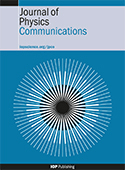
Journal of Physics Communications
Fostering Innovation in Physics and AstronomyJournal of Physics Communications, published by IOP Publishing Ltd, serves as a significant platform for the dissemination of innovative research in the realm of physics and astronomy. Since its inception in 2017, this Open Access journal has fostered a collaborative environment, allowing researchers, professionals, and students to share their findings and ideas without barriers. With an ISSN of 2399-6528, the journal has established its credibility in the academic community, achieving a ranking of Q3 in the 2023 category of Physics and Astronomy (miscellaneous), as well as a respectable position in Scopus with a rank of #122 out of 243 in its field. The journal's focus is on bridging theoretical concepts and practical applications, making it an essential resource for those engaged in the evolving landscape of physics. The Journal of Physics Communications not only aims to advance knowledge but also to inspire interdisciplinary collaboration, inviting contributions from diverse areas within physics. Authors and readers alike will find this journal particularly beneficial to stay updated on emerging trends and innovative research.
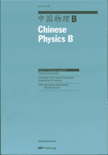
Chinese Physics B
Fostering collaboration in the realm of physics excellence.Chinese Physics B, published by IOP Publishing Ltd, is a distinguished journal in the field of Physics and Astronomy, offering a platform for researchers to disseminate cutting-edge studies and advancements. With an ISSN of 1674-1056 and an E-ISSN of 2058-3834, this journal emphasizes open access, ensuring that groundbreaking research is readily available to a global audience. Reflecting its commitment to quality, Chinese Physics B is categorized in the Q3 quartile (2023) in its subject area and ranks 118 out of 243 among its peers in general physics and astronomy according to Scopus, placing it in the 51st percentile. Publishing since 2008, the journal not only maintains a rigorous peer-review process but also aims to foster collaboration among academics in various physics disciplines. With its base in the United Kingdom, Chinese Physics B remains a crucial resource for those seeking to stay abreast of developments in the diverse world of physics.